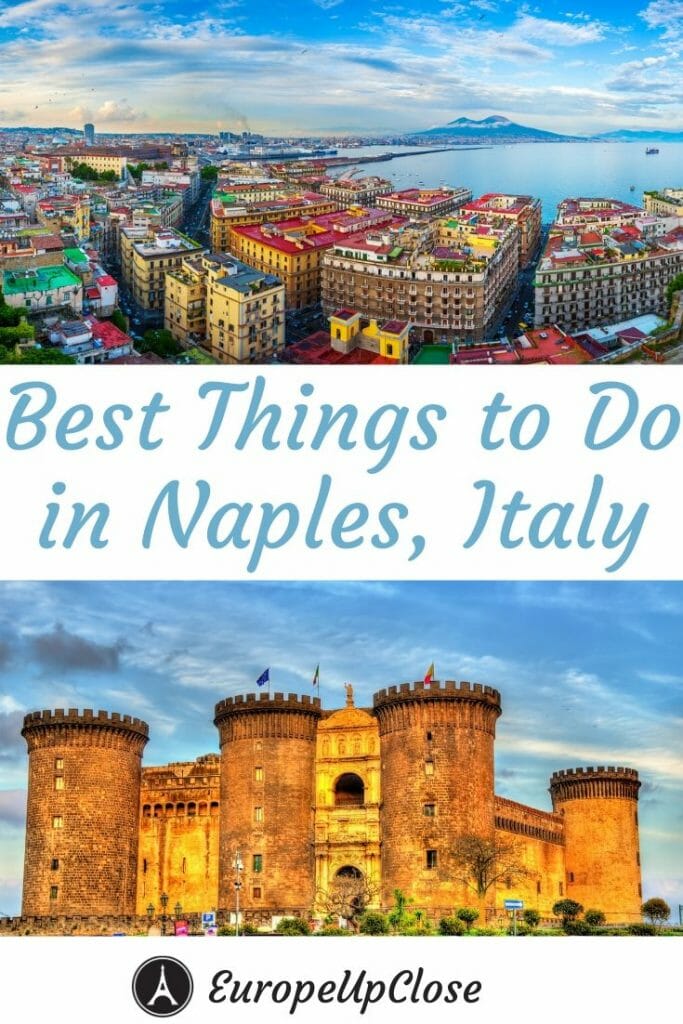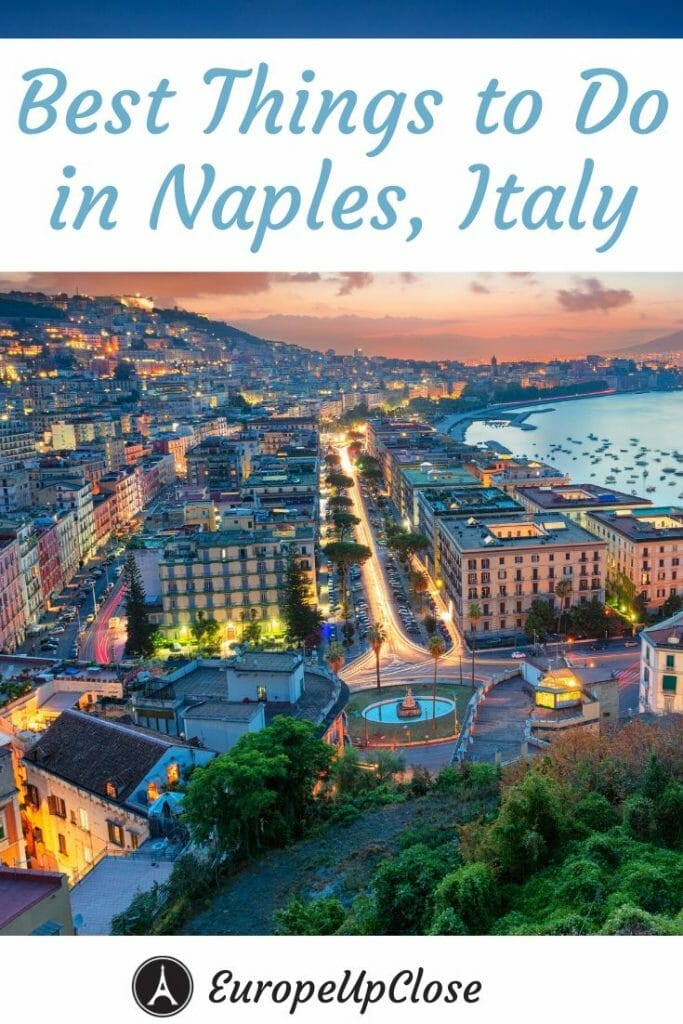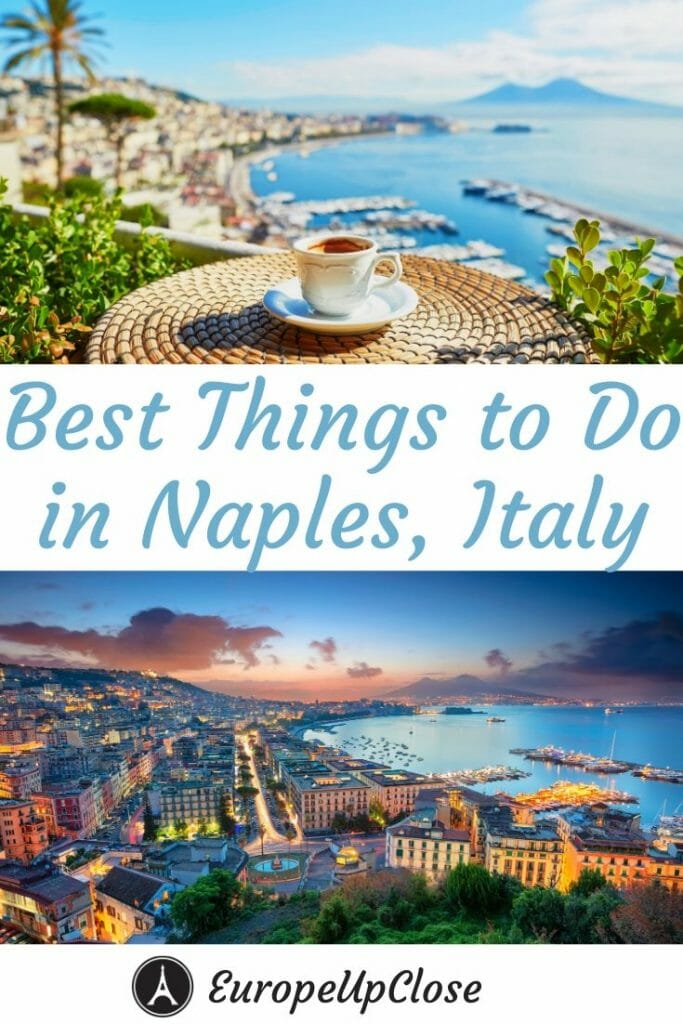“You either love it or you hate it,” said a friend of mine. It was the first thing I ever heard about the Italian city of Naples, and the phrase’s authenticity remains intact after all these years. Naples is unlike any other city in Italy: It is busy, loud, and dirty on one hand (many people say it feels like stepping into a Middle-Eastern bazaar) and creative, friendly, and picturesque on the other.
Naples is probably one of the most controversial cities in Italy. People either love it or hate it, it seems. Italy’s third-largest city is famous for its Neapolitan Pizza and a gateway to Pompeii, but not many people actually choose to stay in Naples. But there are actually a lot of really interesting things to do in Naples, Italy.

Top Things to do in Naples Italy
Neapolitan Pizza
Yes, in Naples, Pizza is a point on the itinerary. Neapolitan-style pizza has been heralded the world over for being the true pizza, however, those who’ve been to Naples know that no two pizzaioli (pizza chefs) make the same pizza. In short, there is no one authentic Neapolitan-style pizza, though many will argue otherwise. To discover which pizzaiolo’s pizza is your favorite, there’s no other way than by visiting Naples. Here are a few tips to help you on your way.
Some pizza chefs in Naples believe that there are only two kinds of pizza: Margarita and Marinara. A marinara pizza, put simply, is dough, garlic, and sauce; and a Margarita pizza is dough, sauce, and cheese. While this doesn’t do much for the Hawaii-style pizza lover, don’t let the simplicity fool you; these are the makings of the best pizzas on earth.
Book your Neapolitan Pizza Making Class here>>
Book your Naples Food Walking Tour here>>

Naples National Archeology Museum
Speaking of Pompeii, its most striking artworks were carried off to the National Archeology Museum. While this means that they are not on display in Pompeii (which is OK, in my opinion, because there is already plenty to see in Pompeii), it also ensures that they won’t be buried for another 1500 years the next time Mt. Vesuvius explodes.
Here’s my advice: Go to Pompeii first, then go to the National Archeology Museum. Is it worth it? Yes, yes, and yes. The artwork, statues, and artifacts are absolutely striking and give you yet another side to the fantastically preserved city. The museum also includes many of the statues from the Farnese Collection. The famous art collection is split up between the National Archeology Museum and Capodimonte Museum. To really appreciate the exhibits, you should definitely get the audio guide when you tour the museum.
Book your museum ticket here>>
Book your museum ticket with audio guide here>>
Directions | Piazza Museo, 19, 80135 Napoli NA, Italy
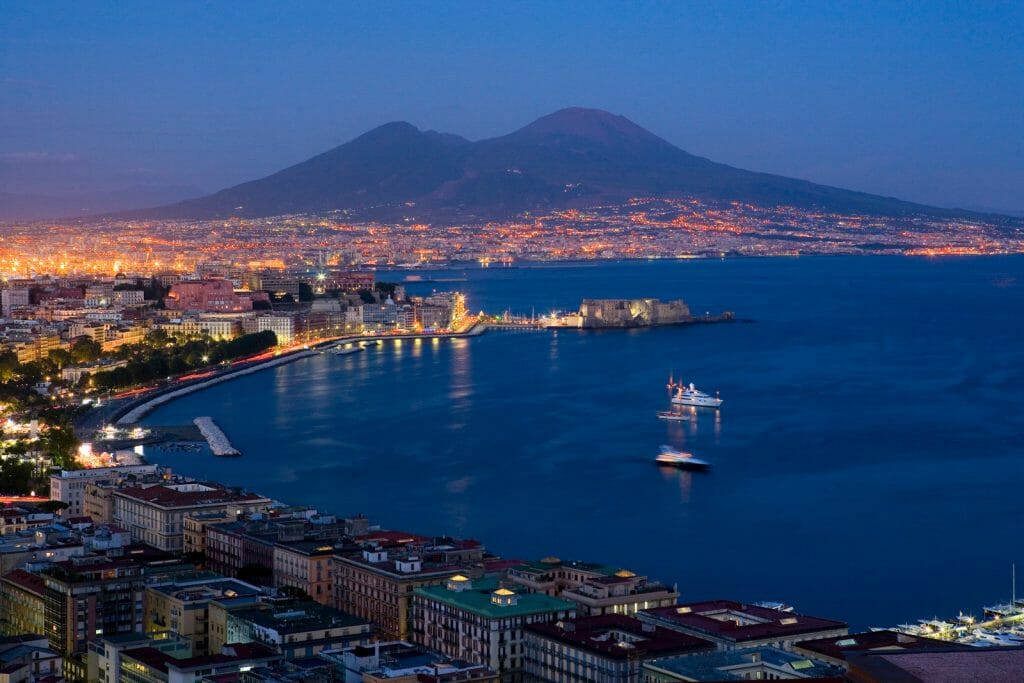
Phlegrean Fields
One of the most confusing sights ever, the Phlegrean Fields is a large volcanic area, not a single location. It encompasses everything west of Naples (to the coast) as well as several islands, including the famous Ischia and Procida.
To do the area justice, you should spend at least two days there. The tickets (4 euro) give you access for two days. This includes, most importantly, the famous Cave of Sybil in Cuma, the striking crater lakes, the Flavian Amphitheater, and the Baia Archeology Museum and Park.
The tickets exclude, most importantly, the Solfatara, a bubbling lava lake once believed to be the entrance to hell, and the underwater city of Baia. The Solfatara costs an extra 6 euro, and the underwater city can only be seen from a glass-bottomed boat, which is easily chartered in Baia for a fee.
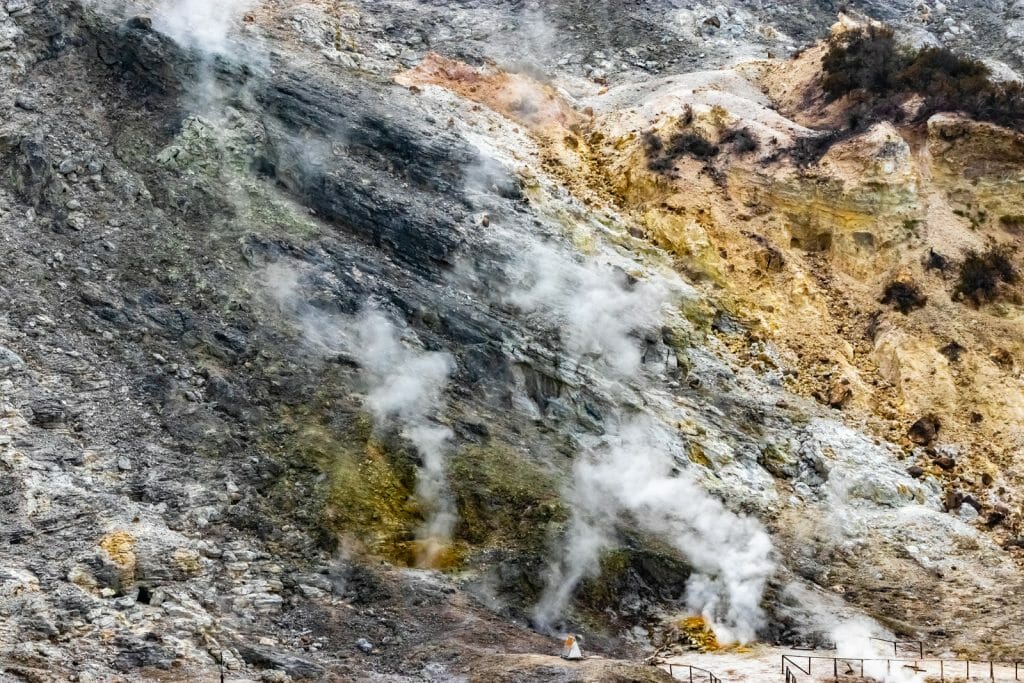
When you consider the sheer size of the Phlegrean Fields and the large number of exceptional sights, it seems like it’s worth a visit. But because the area is so spread out, and none of its ruins are as well preserved as those found in Pompeii and Herculaneum, the jury is divided.
If you have a limited time in Naples and you’ve never seen Pompeii, visiting the Phlegrean Fields is not worth it. If you’ve already seen Pompeii and you’ve got two spare days, expand your circle of ancient experience and see where the richest of the rich Romans once lived. The area’s volcanic activity has resulted in a large number of natural thermal spas.
Directions | 80078 Pozzuoli, Metropolitan City of Naples, Italy
Castles of Naples
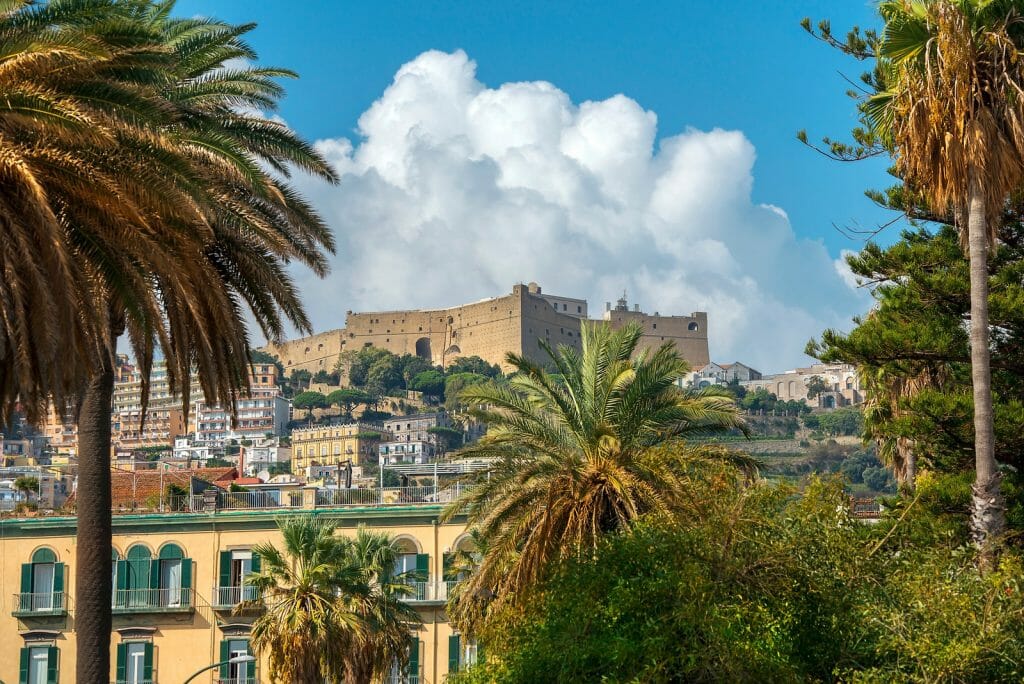
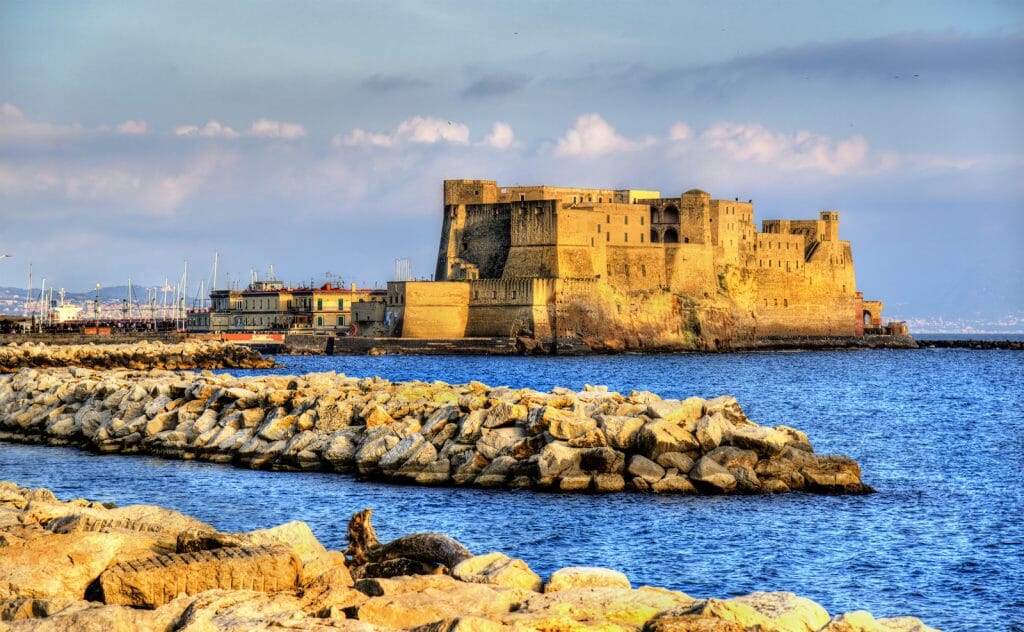

Castel Sant’Elmo
This medieval castle sits on top of a hill near Certosa di San Martino, overlooking the city of Naples. It was built between 1200-1537 and is still in use today.
Castel dell’Ovo
This seaside castle was built on the island of Megaride, which is now a peninsula in the bay of Napoli. Built in the 5th century, it is the oldest castle in Naples.
Castel Nuovo
The Castel Nuovo – also known as Maschio Angioino – is located right in the heart of Naples. It was built in 1279 and used as the royal seat for kings of Naples, Aragon, and Spain until 1815.
Capodimonte Museum
The grounds of this museum alone are enough to make it worth a visit. Located in a beautiful park on a hilltop that overlooks Naples, the museum was built for one reason, and one reason only: to house the Farnese Collection. One of the most important art collections on earth, it includes works by many famous Italian painters and sculptors.

Its paintings are located inside the Capodimonte Museum, and its sculptures are in the National Archeology Museum. Many works are featured besides those of the Farnese Collection, including some excellent Caravaggios. A portion of the museum is dedicated to contemporary art, including some freaky Andy Warhols. The Capodimonte Museum is definitely worth it.
Directions | Via Miano, 2, 80131 Napoli NA, Italy
The Royal Palace in Caserta
A 40-minute train ride gets you to Caserta, and the trains leave Naples central station every 20-30 minutes. The Royal Palace is located across the street from the Caserta train station, making it easy to visit on foot. The palace was built by Charles of Bourbon, who was King of Naples in the mid-18th century. He wanted it to be more grand than Versailles.




I’m not sure whether his architect, Luigi Vanvitelli, failed, or whether the grounds are not well kept, but I found the palace bland. The hedges and the grass were not closely manicured, and very few flowers were in bloom. From the outside, the palace did not impress me in any way other than its sheer size. Inside, the rooms were beautifully decorated.
Besides having a picnic on the lawn—with a 40-meter manmade waterfall cascading in the distance—my favorite part of the visit was the gold leafing and ancient Venetian glasswork inside. Entrance costs 8 euro. The grounds are so large that a bus service runs around the grounds; a round-trip ticket (from the castle to the end of the grounds and back) costs 1 euro.
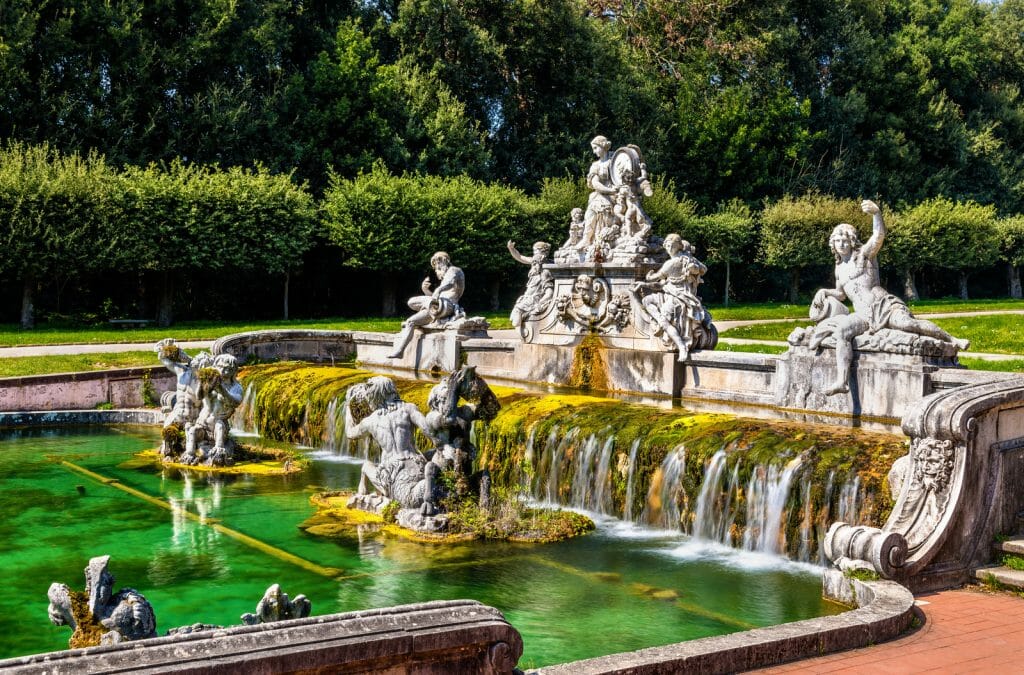
I suggest immediately catching the bus and taking it to the far end of the grounds; indulge in the English Garden, then walk back beside the waterway. Buses leaving from the palace and going out to the grounds are not crowded; coming back is another story. Is the Royal Palace in Caserta worth it? Not unless you’re traveling with children
Directions | Viale Douhet, 2/a, 81100 Caserta CE, Italy
Underground City of Naples Italy
Ok, so I’ve come around to accepting that there are other things to do in Naples than eat pizza. It was tough though and took something as tremendous as Naples Underground, or Napoli Sotterranea, to prove it to me. It’s as creepy as any underworld tale, but there’s a friendly guide to take you through the twisting, winding passages below the streets of Naples.
Underground of Naples Tickets
There are a number of Naples underground tours, each beginning in different parts of the city, with each tour revealing different sections of Naples Underground. The tour my girlfriend and I took featured the underground remains of a Greek-Roman theater. It began in the vicinity of the Duomo di Napoli.
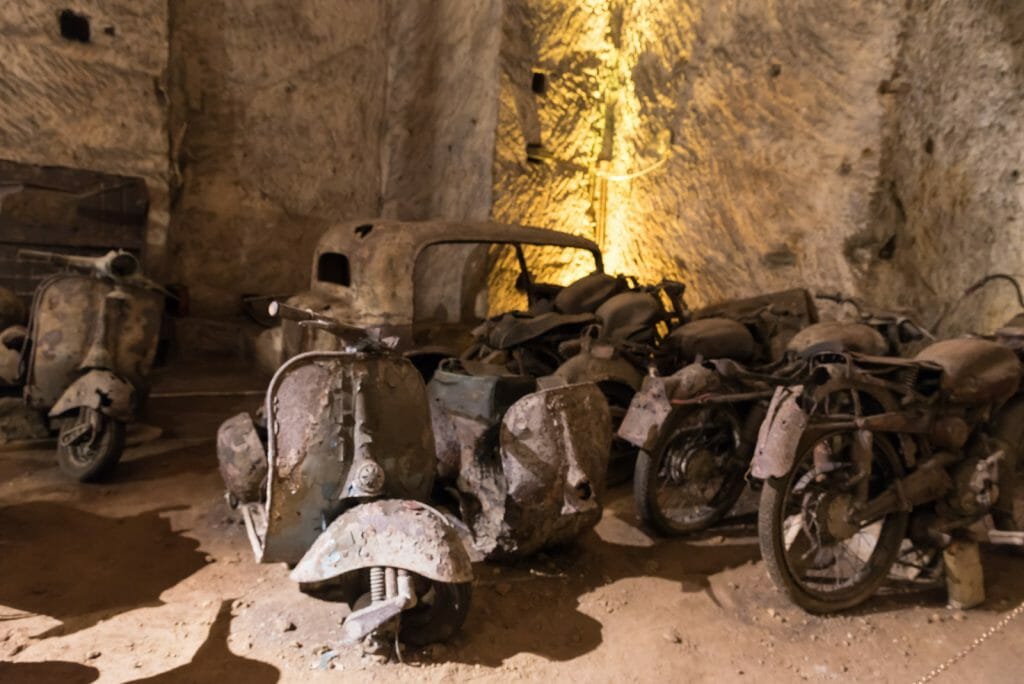
The small gift shop at the ticket office has a window in the floor that offers a glimpse into the world below. English language tours leave throughout the day, and when we arrived without reservations, we only had to wait 15 minutes for the next tour. I can now attest that the experience is well worth your time and money.
Naples Underground Tour
We followed our guide down a deep, long stairway until reaching a series of large rooms with towering ceilings. Our guide explained the ancient method of constructing homes in the area over 2400 years ago, which created the underground city that we were now walking through. The inhabitants dug large holes to excavate stone that they then used to construct houses. The large holes were subsequently used as wells.
After enough people had populated the area, there were so many wells that they were connected to create massive underground aqueducts. At one point, the aqueduct was so large that it connected Naples to Rome, a distance of nearly 140 miles.

The aqueducts were eventually closed down when cholera swept through Europe and they were never again used to provide drinking water. During WWII, some of the people in Naples decided to use the underground city as a bomb shelter; creepy toys and graffiti from that time period can still be seen.
A few of the rooms are still used today, some for biology experiments, and some to serve as a venue for art shows. There were also rooms with water in them, making for a stunning visual experience.
Explore by candlelight
My favorite part of the tour was the candle-lit trip through some very narrow passages. This part of the tour, however, may not appeal to people of large bearing or those with claustrophobia. Everyone in the group is given a candle and taken on a short journey through thin passages and into a room that features some pretty incredible sights.
I’m going to leave those sights a secret, however. I can’t give it all away! The tour guides are very good at creating fun surprises and I wouldn’t want to ruin the anticipation and excitement for readers who will one day take the tour.
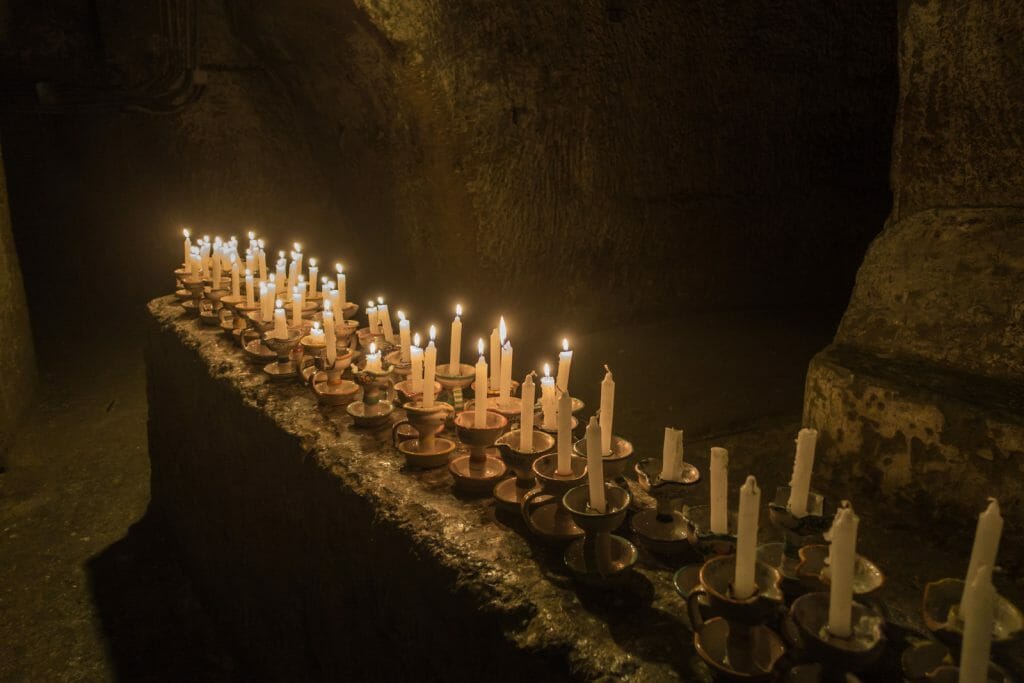
Though the underground city has been mapped for over fifty years, the endeavor still struggles to raise enough money to unearth more of its incredible remains. When our guide showed me a map that depicted the size of the underground city, I was amazed to find that it stretched well beyond the current borders of Naples. Our tour, we were told, includes less than 1% of the giant, Naples Underground.
Book your Naples Underground Tour here>>
Is Naples Worth a Visit?
Naples is unlike any other city in Italy: It is busy, loud, and dirty on one hand (many people say it feels like stepping into a Middle-Eastern bazaar) and creative, friendly, and picturesque on the other.
It is definitely not a quiet, romantic Italian town like Siena or Verona. Threats of pickpockets and a pervasive garbage problem keep many travelers from even visiting the city, while a one-of-a-kind culinary scene, inexpensive shopping, and a vibrant waterfront make it a must-see for others. If you haven’t guessed already, I fall in the latter group.
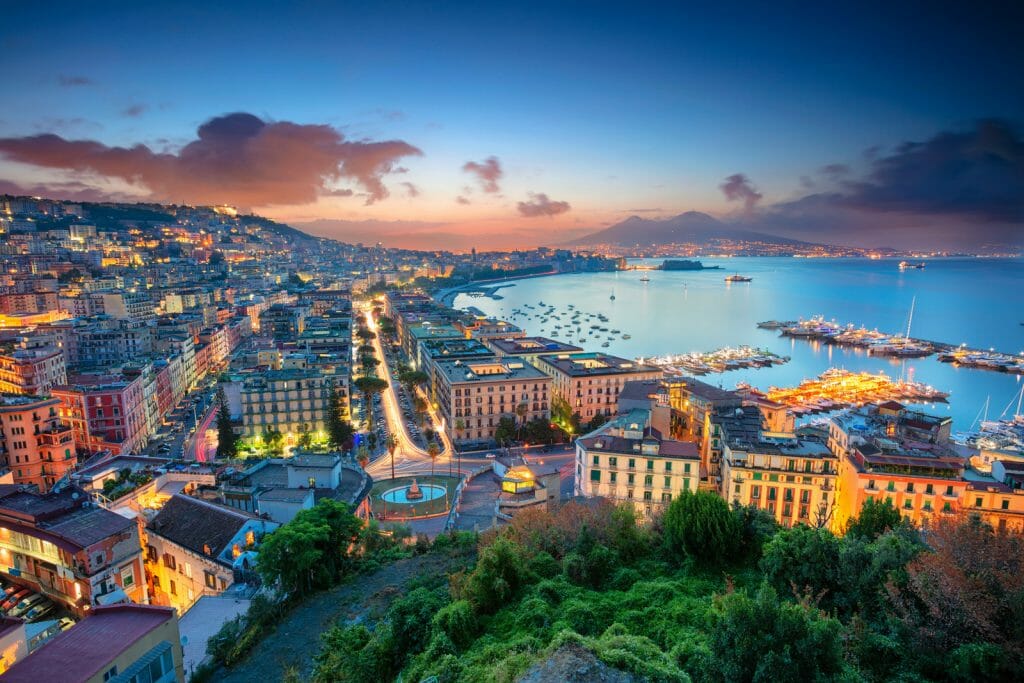
The first time I visited Naples, I was immediately taken aback by its sheer bustle. I still attest to seeing a family of six—with a pet—whiz past me on a moped. The streets are small and the traffic is frantic. And the large outdoor market in front of the central train station is overwhelming and seemingly chaotic. However, once I became accustomed to the energy of Naples, I discovered the unique qualities that fueled it.
The people in Naples are friendly and welcoming, and always willing to help. For example, the clerk at the hotel where I usually stay is always giving guests tips on the best things to see and do. He also warns of pickpockets and provides extensive advice on how to carry money and cameras. In the stores and restaurants, people are quick to ask you where you are from and to welcome you to their city.
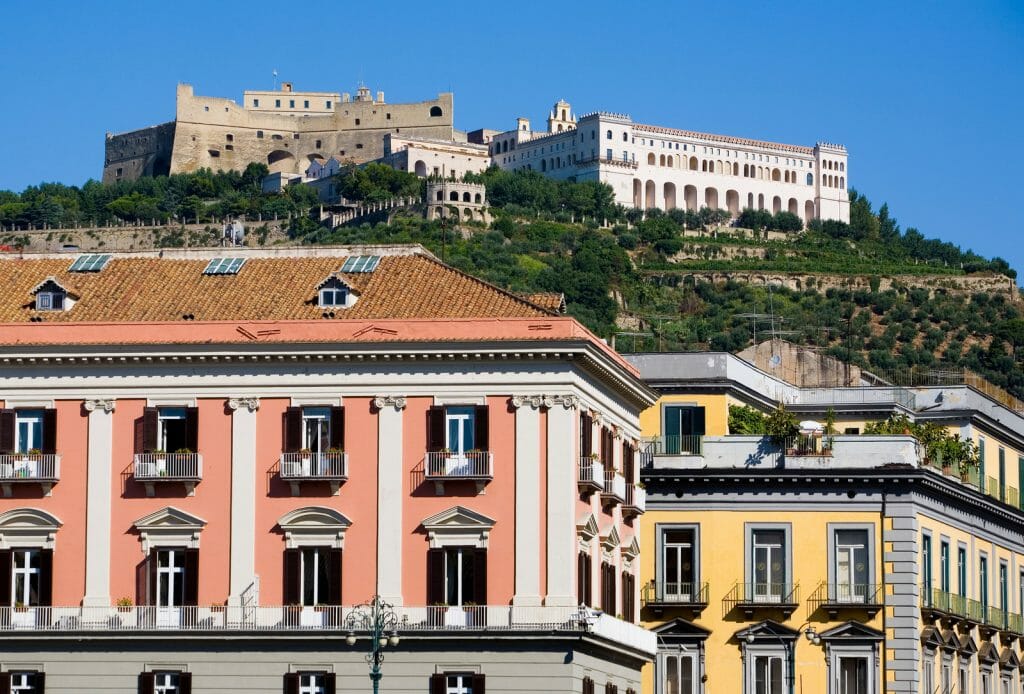
Naples Castles, Markets, and Architecture
The things to do in Naples are its two castles, the Naples National Archaeological Museum—considered the most important archeological museum in Italy—, tours of its underground city Sotterranea, and a waterfront full of beautiful sailboats and traditional fishing boats. The bay of Naples, on which the city sits, provides a clear view of the ancient Vesuvius volcano that buried the nearby city of Pompeii in 79AD. The Castle dell’Ovo is located on a tiny island that is joined to Naples by a short bridge and is free to visit. Castle Nuovo, which costs 5 euro to enter, is the more striking castle, with ancient stonework and dramatic towers.
Finally, the architecture of Naples won’t be forgotten, as huge churches, cathedrals, and other strutures of Medieval, Renaissance, and Baroque periods are found throughout the city. My favorite spots are the Piazza Dante, which boasts a great statue of Dante, and the Piazza del Plebiscito (especially at night). With Naples, I’ve found that looking beyond the crumbling apartment buildings provides an exciting glimpse into a city that is truly unlike any other on earth.
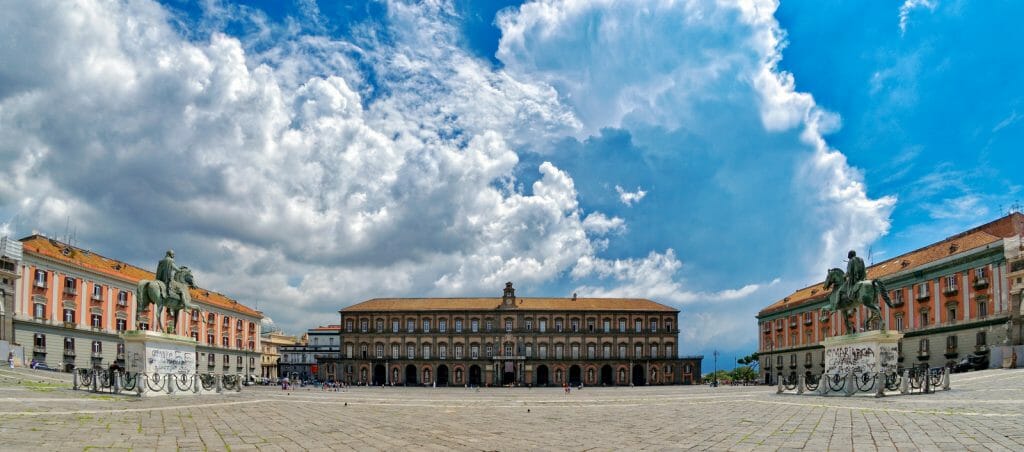
The markets in Naples are a great place to find clothes, shoes, purses, sunglasses, hats, and so on. However, they are known for pickpockets, so keep your money hidden or spread out between different pockets. If you try on shoes, the venders will provide you a seat. And, bartering is a way of life in the markets, so never pay the listed price.
Foods to try in Naples
From a culinary perspective, Naples offers traditional Italian foods that cannot be found anywhere else—not even in other Italian cities. Neapolitan pizza is, of course, at the forefront and you have your pick of top pizzerias in Naples.
The street food, which is sold from open storefronts around every corner, is some of the best in Italy. Fried panini stuffed with meats and cheeses, arancini (deep-fried risotto balls stuffed with mozzarella), calzones, and an assortment of fried vegetables and potatoes (sold for 30 cents a piece), should not be missed.
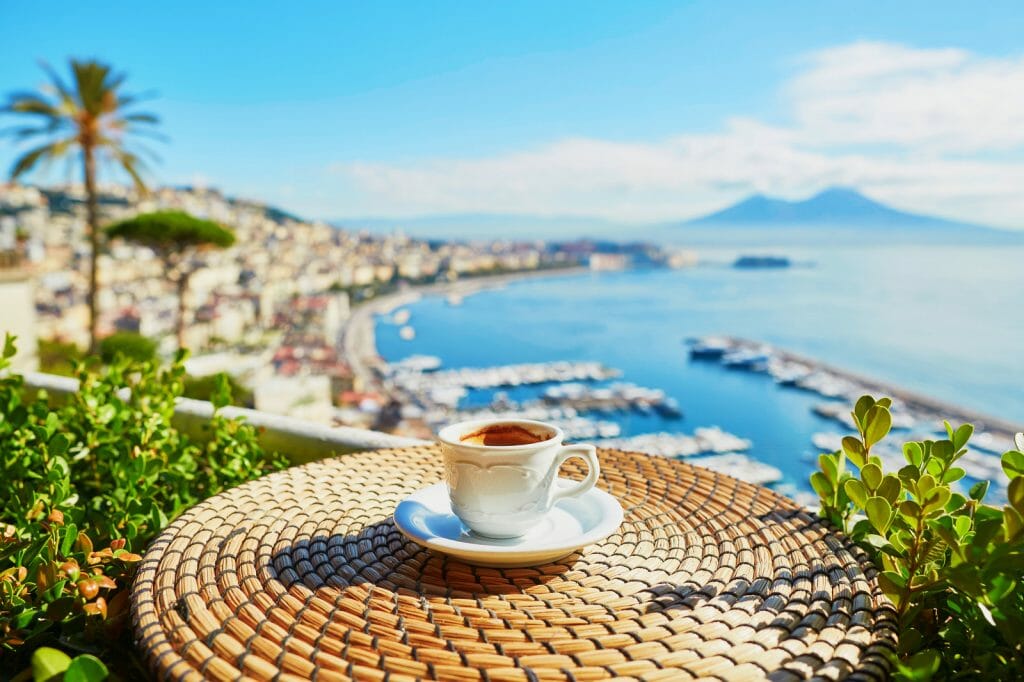


Further, the pastries in Naples are incredible. Sfogliatelle is a horn-shaped pastry that looks like it is made with circles of layered flakey crusts. Traditional biscotti are also served, though bear no resemblance to the dried, crunchy biscotti found in the United States. And espresso in Naples is definitively some of the best in Italy.
As you can see, Naples is worth a visit and there are plenty of attractions to keep you busy for a few days and fill the time between Pizzas.
Things to do in Naples Italy – Pin for Later:
